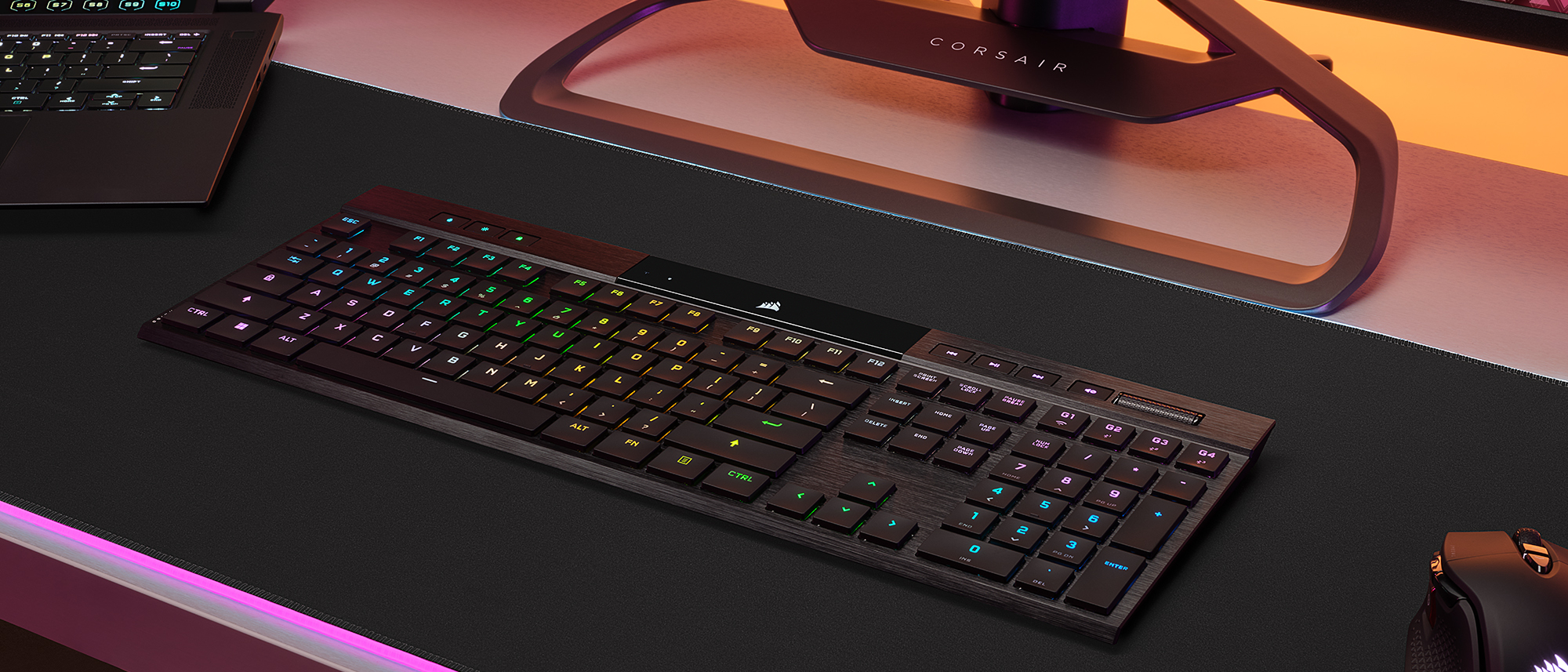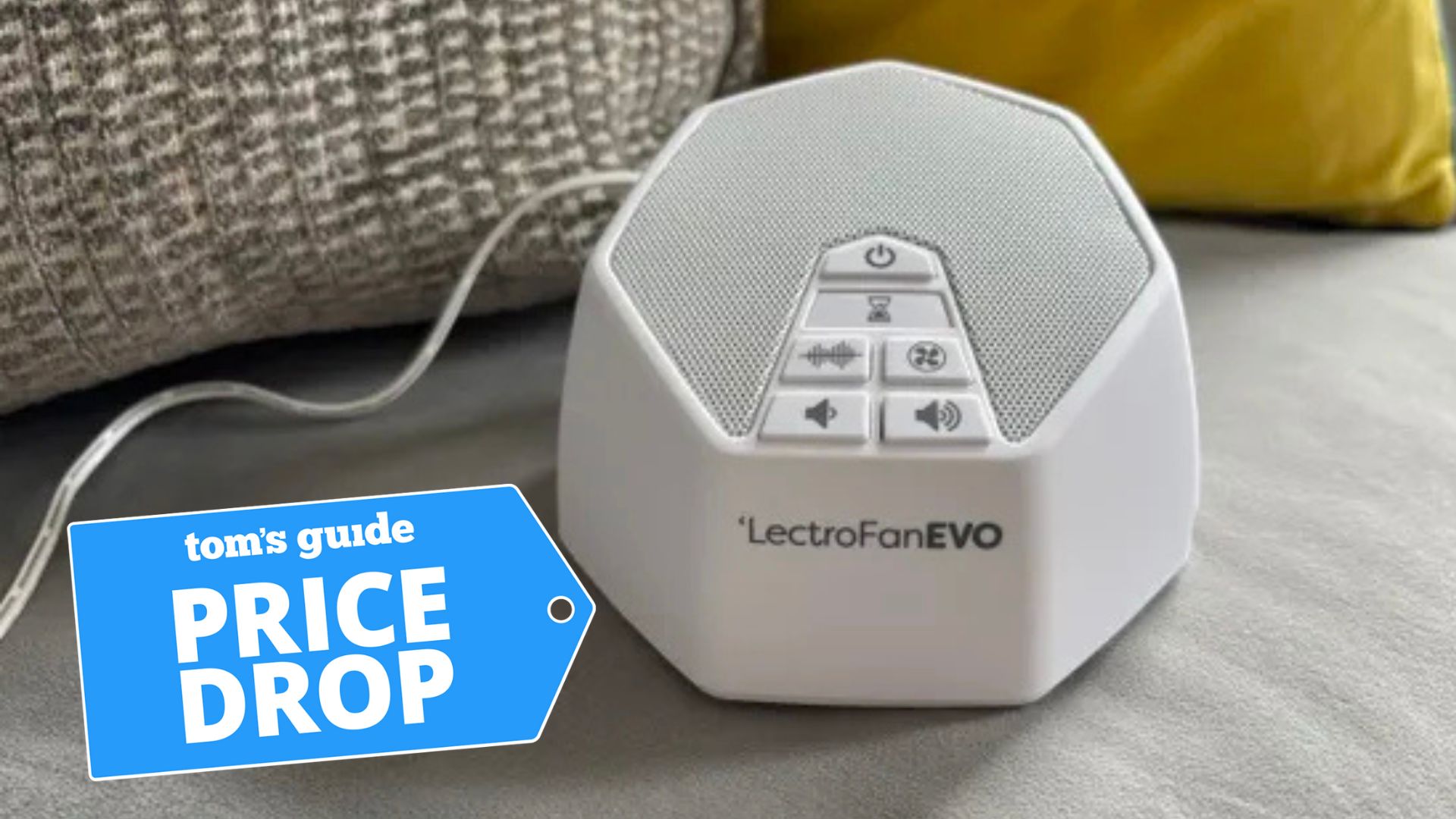Tom's Guide Verdict
The Corsair K100 Air Wireless represents the company’s first full-size wireless mechanical gaming keyboard, and it’s mostly a pleasure to use.
Pros
- +
Excellent wireless performance
- +
Sleek design
- +
Potentially generous battery life
- +
Smart placement of extra keys
Cons
- -
Frustrating low-profile keys
- -
Expensive, even compared to similar products
Why you can trust Tom's Guide
Key Type: Mechanical
Switch Type: Cherry MX Ultra Low Profile Tactile
Illumination: Full RGB
Size: 17.3 x 6.2 x 0.7 inches
The Corsair K100 Air Wireless is a big step in the right direction for wireless mechanical gaming keyboards. For those who aren’t familiar with the manufacturer, Corsair makes some of the best gaming keyboards on the market, including the best-in-class Corsair K70 RGB Pro. And yet, up until now, the company hasn’t made a full-size wireless gaming keyboard — and that’s a shame, as the K100 Air Wireless is somewhere between “quite good” and “excellent.”
With excellent connectivity, a striking design, generous battery life and just a few smart extras, the K100 Air Wireless is sure to please both casual and hardcore PC gamers — as long as they’ve got deep pockets, anyway. At $280, the K100 Air Wireless is also one of the most expensive wireless mechanical gaming keyboards from a major manufacturer, and it’s not necessarily better than its closest competitors (although you may be able to get it for slightly cheaper with one of our Corsair coupon codes). The ultra-low-profile keys are also not as satisfying as regular Cherry MX switches, and much more difficult to maintain.
Still, if you can get past the fact that the K100 Air Wireless is not a riff on the excellent K70 design — and not trying to be — there’s a lot to like about it. As for whether it’s worth the steep asking price, our full Corsair K100 Air Wireless review aims to provide the answers.
Corsair K100 Air Wireless review: Design
If there’s one word to describe the Corsair K100 Air Wireless, it’s “thin.” The black aluminum chassis measures only 0.7 inches thick, and the low-profile keycaps don’t elevate it much beyond that. At first glance, the K100 Air Wireless resembles a membrane office keyboard more than a gaming model. But beneath the keycaps, there are indeed Cherry MX switches, and they help justify the peripheral’s high price.
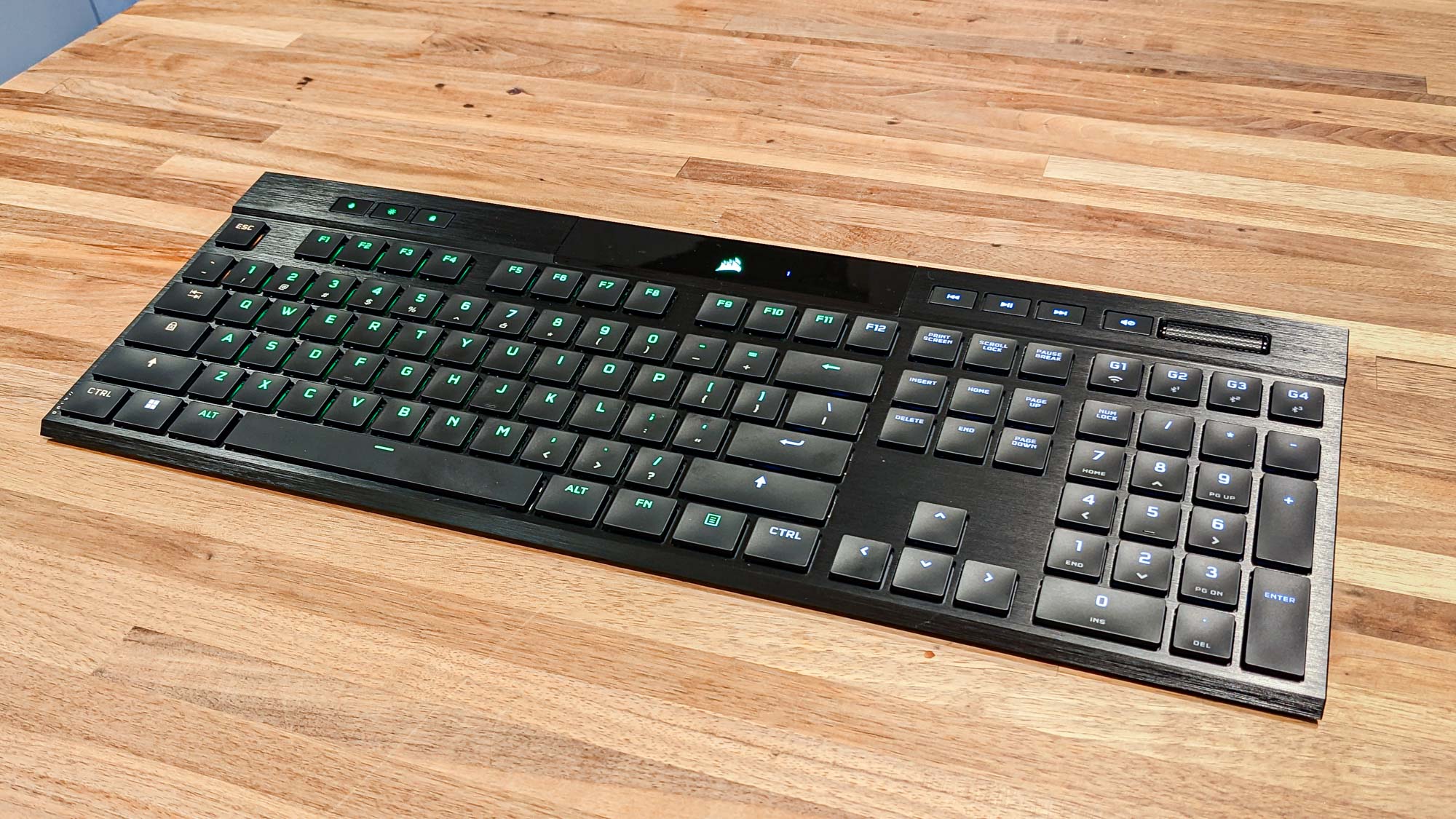
Beyond that, what impressed me about the K100 Air Wireless is just how little wasted space there is. At 17.3 inches across, the keyboard is a good inch or inch-and-a-half smaller than many of its competitors. And yet, the K100 Air Wireless still has discrete media keys, as well as an extra row of programmable keys just above the number pad. The compact design is admirable, even if the extra keys are tougher to reach than the leftward column that you’d find on something like the Logitech G915.

Overall, the keyboard is about as straightforward as it looks. There’s an on/off switch in the back, as well as a USB-C charging port. You can adjust brightness, or set up Bluetooth, or enable Game Mode (which deactivates the Windows key and Alt-Tab during gameplay) with a handful of buttons in the upper-left. How much you like the design is almost entirely dependent on how much you like low-profile keycaps, but if you’re a fan, the K100 Air Wireless looks good.
Corsair K100 Air Wireless review: Keys
My biggest issue with the Corsair K100 Air Wireless is partially a matter of preference, and partially a matter of practicality. Like most Corsair keyboards, the K100 Air Wireless uses authentic Cherry MX mechanical switches, which are generally the best technology available for a mainstream gaming keyboard. Unlike most Corsair keyboards, though, the K100 Air Wireless uses Cherry MX Ultra Low Profile Tactile switches. These help keep they keyboard ultra-thin, but come with their own set of drawbacks.
Get instant access to breaking news, the hottest reviews, great deals and helpful tips.

First off, the key switches are arguably not that comfortable. With 65g of actuation force, 0.8 mm of actuation distance and 1.8 mm key travel, the Ultra Low Profile Tactiles are quite a bit shallower than, say, the Cherry MX Browns, which offer 55 g actuation force, 2 mm actuation distance and 4 mm of key travel. While this does mean you could rapid-press the Tactiles quite a bit faster, they don’t feel especially satisfying. The ultra-low-profile design makes sense in a gaming laptop; on a full-size keyboard, it feels unnecessary.
Granted, that point is up to personal preference, so take it with a grain of salt if you like your switches low and lightweight. What’s not up for debate is that these key switches make the keys much more difficult to clean and service than their standard-sized counterparts. Corsair warned reviewers that trying to remove keycaps could break the switches entirely. Standard Cherry switches are easy to part from their keycaps, which means you can clean them regularly. If dust and dirt get caught beneath a K100 Air Wireless switch, it’s going to be difficult to get them out.
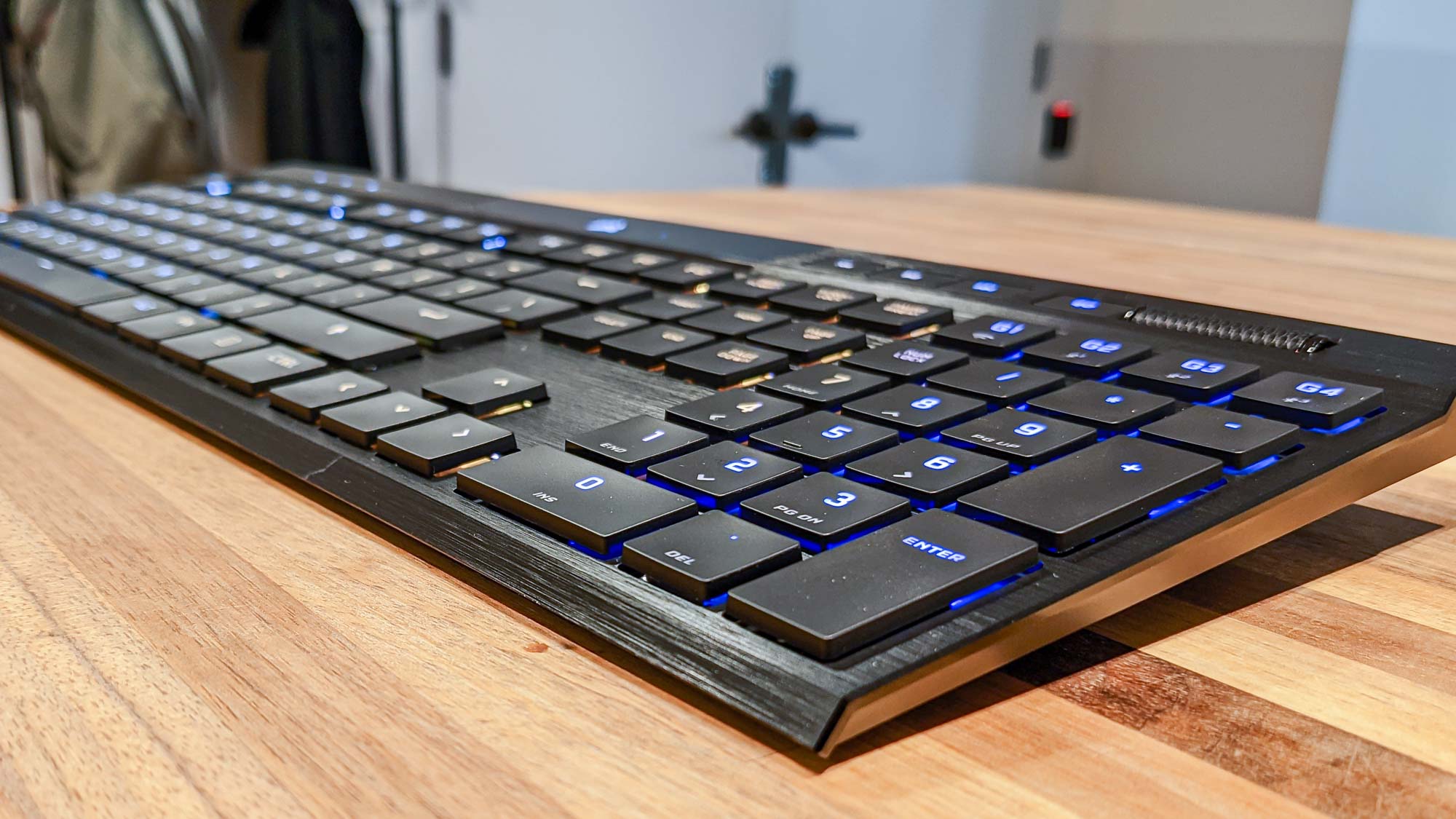
In terms of typing, the K100 Air Wireless holds up pretty well. In a one-minute Typing.com test, I scored 105 words per minute with 98% accuracy on the K100 Air Wireless, versus 116 words per minute with 99% accuracy on my usual G915. This is not a big difference, considering how much more familiar I am with the latter.
Corsair K100 Air Wireless review: Features
Like most other Corsair gaming gear, the Corsair K100 Air Wireless runs on the Corsair Utility Engine (iCUE) software. This allows you to reprogram keys, set up lighting patterns, monitor the battery level, create profiles for individual games and apps, and so forth. During our review period, iCUE was not yet compatible with the K100 Air Wireless, however. We can say that the software works well with other Corsair gear, and that it tends to be a little complex, particularly if you want to adjust the lighting beyond the basics.
The K100 Air Wireless has a few features worth discussing that aren’t explicitly tied to the software, though. First and foremost is the wireless connectivity, which comes in both USB and Bluetooth flavors. The USB dongle is a Corsair Slipstream model, which means that you can connect multiple Corsair peripherals to a single dongle. This is useful if you have newer Corsair gear, although it doesn’t work with older peripherals, such as the Corsair Dark Core RGB Pro SE gaming mouse.
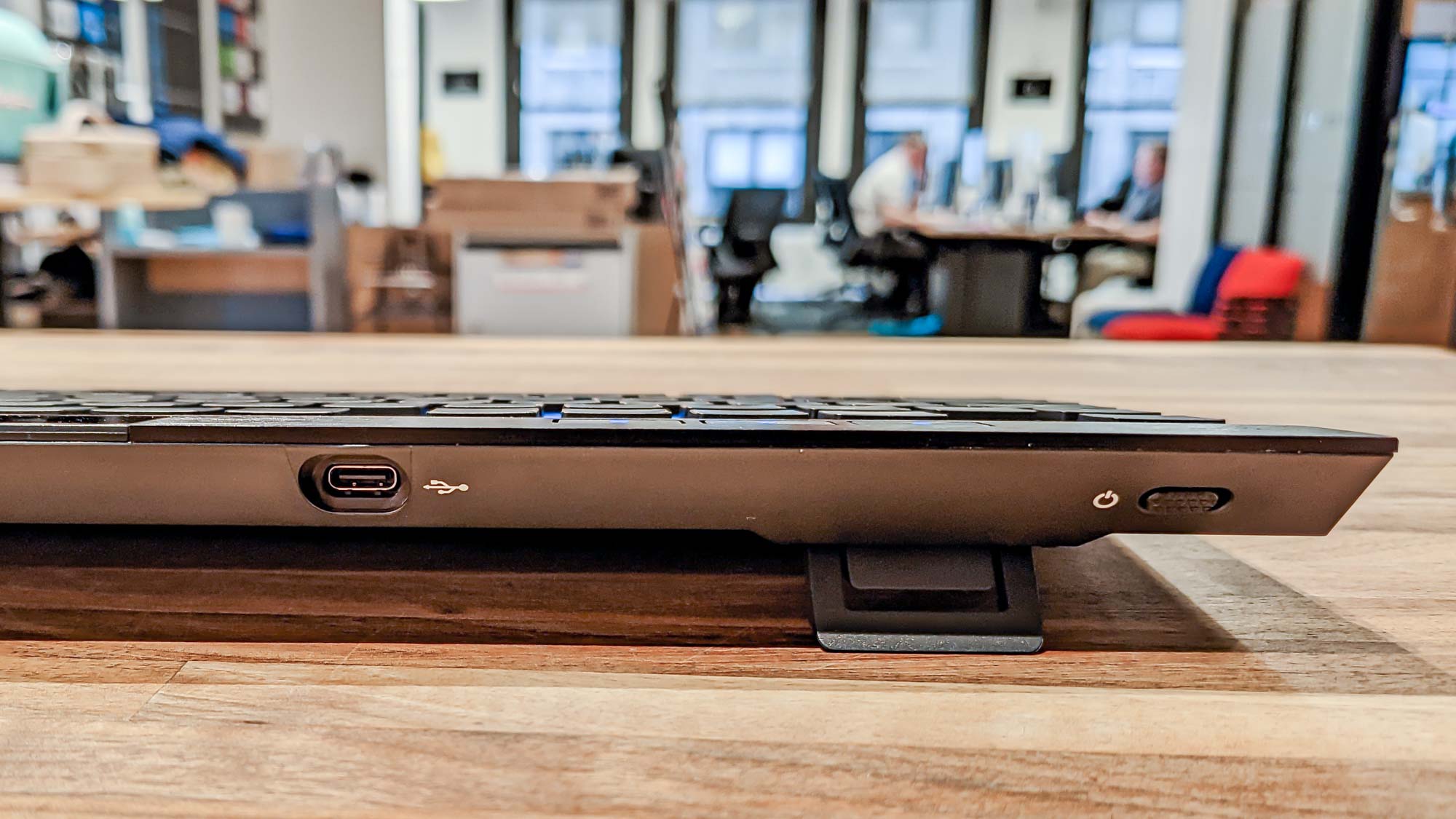
The Bluetooth mode also works as advertised, and lets you connect to up to three different systems. As such, you could theoretically connect the K100 Air Wireless to four different devices around your home, which is helpful if you have a desktop, a laptop, a game console and a mobile device.
Finally, while the device’s battery life is highly variable, you can get up to 200 hours of use if you’re willing to forego RGB lighting entirely, according to Corsair. That’s about 25 full workdays. With the lights operating at full tilt, you’ll get 50 hours, or about six full workdays. When we tested the peripheral, we used full RGB lighting, and the rate of power drain was consistent with Corsair’s 50-hour estimate. Either way, it’s a pretty good amount of battery life.
Corsair K100 Air Wireless review: Performance
I tested the Corsair K100 Air Wireless with Age of Empires IV, Doom Eternal, Cyberpunk 2077 and Final Fantasy XIV, and found that the device performed well across the board. No matter how frequently I smashed the keys to execute my skill rotation in FFXIV, or construct medieval houses in AoE, or switch deadly weapons in Doom, or advance dialogue in Cyberpunk, the response was both immediate and accurate.
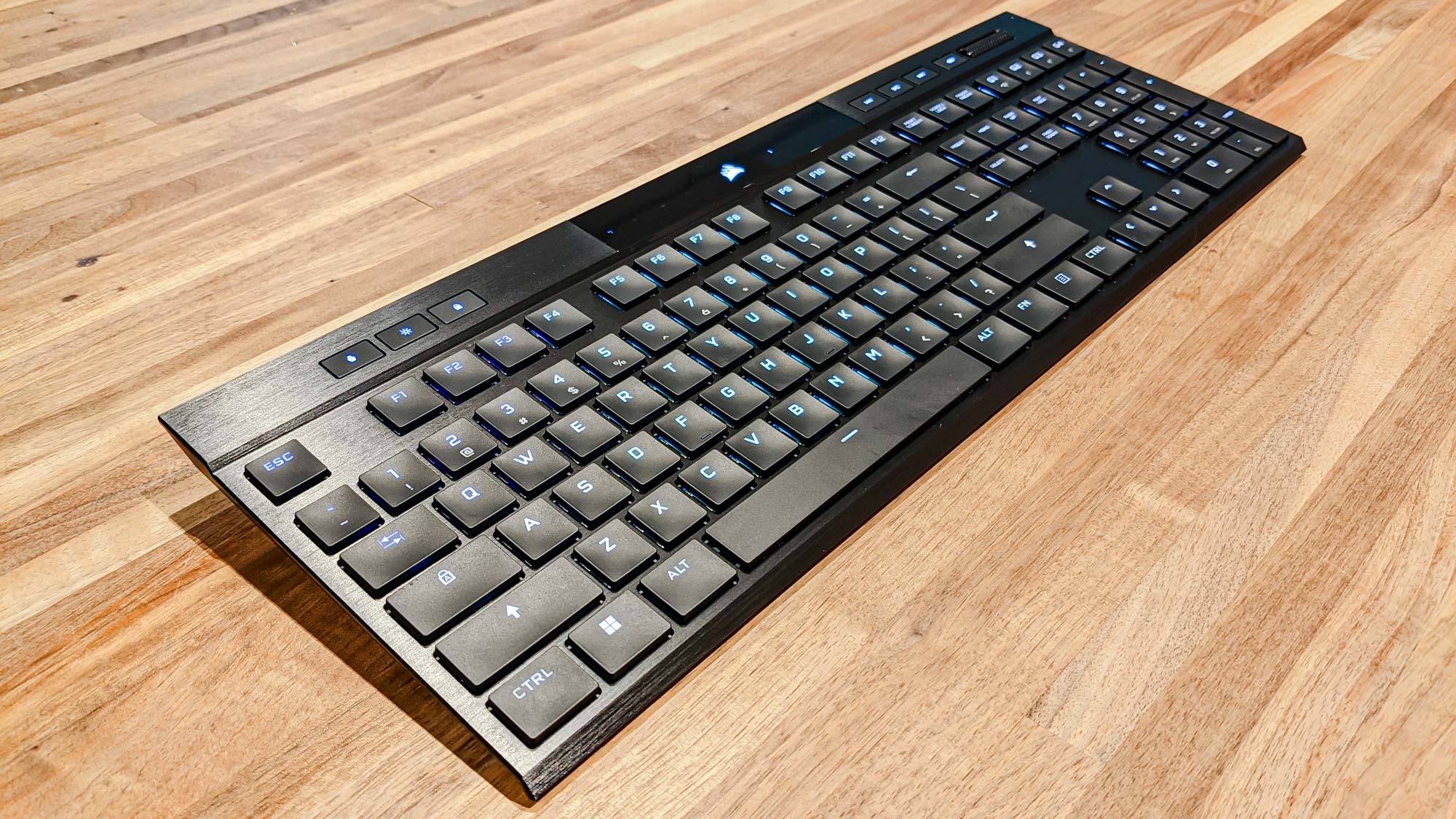
I would offer one potential caveat about the extra keys, however. While I appreciate that Corsair offered a few programmable keys, I don’t see the utility of putting them near the numpad. They’re not easily accessible during gameplay, so I never found much use for them. Perhaps they’re better suited to productivity purposes, but I wouldn’t count on putting any useful macros or shortcuts there.
Corsair K100 Air Wireless review: Verdict
The Corsair K100 Air Wireless isn’t what I expected from the company’s first full-sized mechanical gaming keyboard. I had hoped that Corsair would adapt its K70 design, with its traditional keycaps and tried-and-true switches. However, if you’re willing to let go of some preconceptions, there’s a lot to like about the K100 Air Wireless. It performs well, but apart from that, it looks cool, lasts a long time on a charge and deserves some credit for trying something new.
Still, the key switches may be divisive, and I wonder how well they’ll hold up over time. Asking $280 for the device is also quite a lot, considering that its closest competitors retail for $250 — and that’s already a pretty steep investment.
Consider the K100 Air Wireless if you want something new and different, but consider the G915 and the Razer DeathStalker V2 Pro if you’d prefer to sacrifice a little desk space and save a little money.

Marshall Honorof was a senior editor for Tom's Guide, overseeing the site's coverage of gaming hardware and software. He comes from a science writing background, having studied paleomammalogy, biological anthropology, and the history of science and technology. After hours, you can find him practicing taekwondo or doing deep dives on classic sci-fi.
